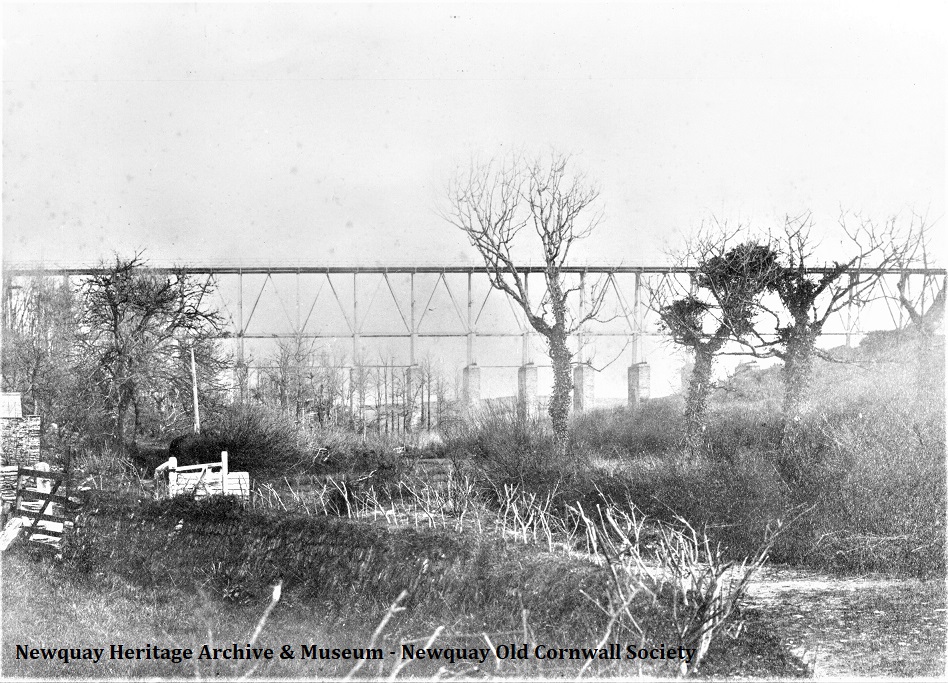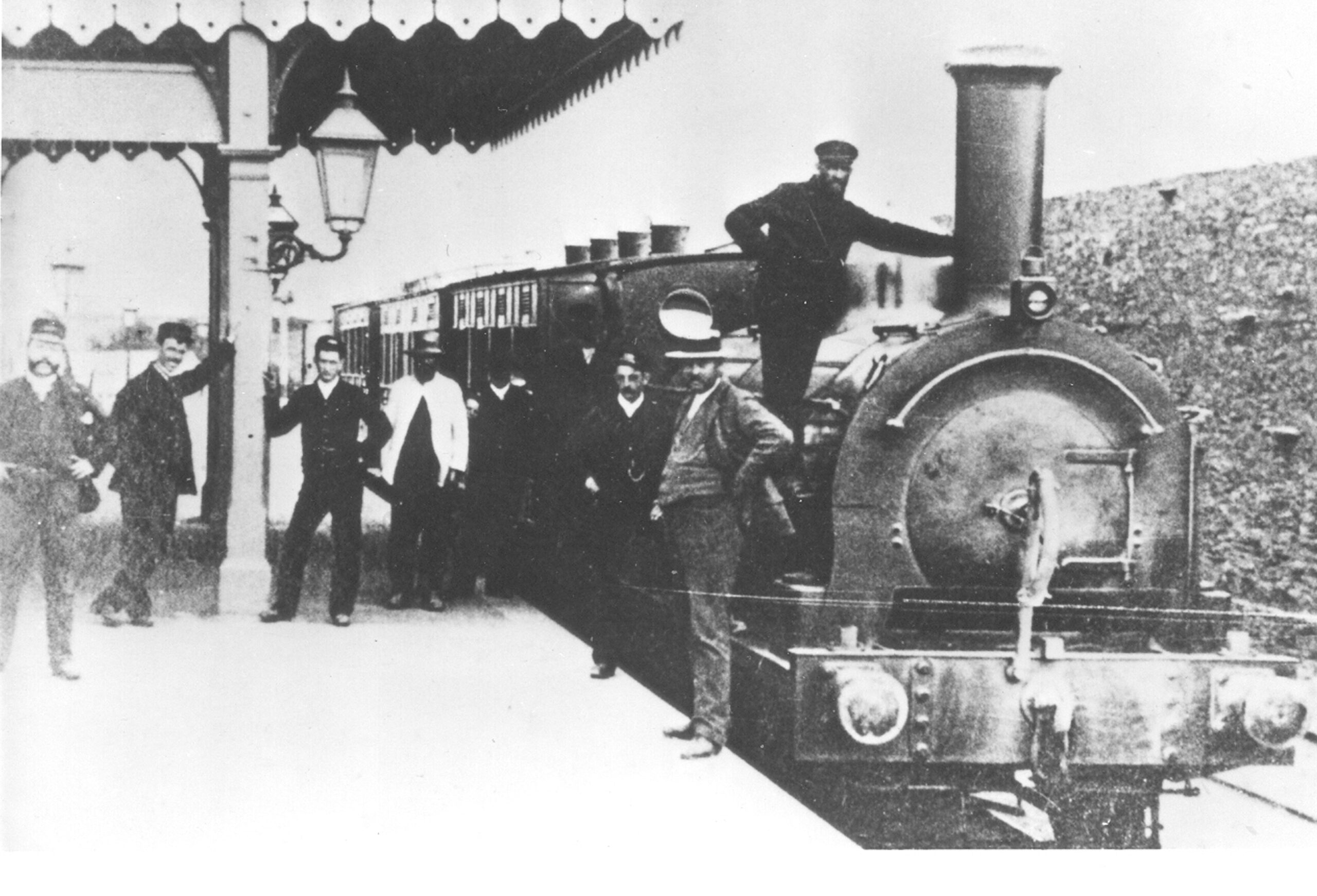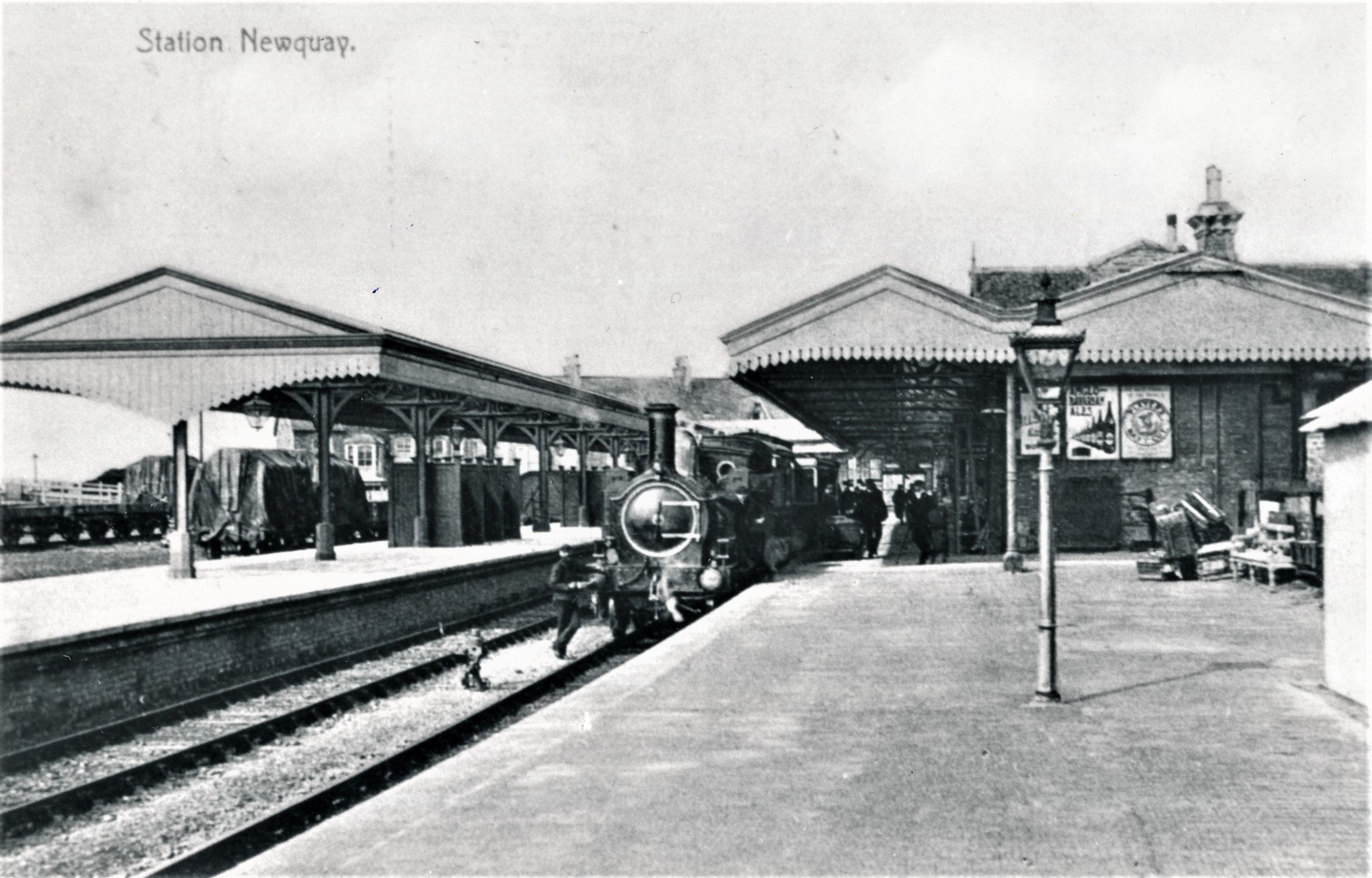Ertach Kernow - Newquay’s branch line spurs the towns growth
The Newquay branch railway line was another catalyst that spurred the towns growth from a small fishing community to Cornwall’s largest resort. The purchase of the Manor of Towan Blystra by Richard Lomax in 1832 and the start of building the harbour was a major step of what would become Newquay. However, following the death of Lomax in 1836 the manor was purchased by Joseph Thomas Treffry in 1838 beginning the expansion of Newquay.
Part of Treffry’s plan was to link the south of Cornwall where his main mineral extraction industries were located with the north Cornish coast. This would enable his minerals, including china clay, to be transported to a north coast harbour and then by merchant ship to south Wales and via Liverpool to Runcorne. They would then be moved through the canal system into the heartland of British industry and manufacture.
Acts of Parliament were needed to carry out the work of constructing tram or railway lines with the first relating to Treffry’s Newquay works dated 1844. This first tramway to Newquay was a horse-worked line between the harbour and Treffry’s Fowey Consols Mines. Construction included a tunnel down to the newly constructed harbour carrying the tram tracks. A viaduct over the Trenance Valley was completed in 1849 with Treffry being the first to cross it on horseback. This was a simple Brunel design with stone columns topped with a wooden structure to carry the trackway and known locally as ‘The Spider’, sufficiently strong for the seven-ton wagons.
Thank you for reading the online version of the Ertach Kernow weekly articles. These take some 12 hours each week to research, write and then upload to the website, and is unpaid. It would be most appreciated if you would take just a couple of minutes to complete the online survey marking five years of writing these weekly articles. Many thanks.
Click the link for survey: Ertach Kernow fifth anniversary survey link
As always click the images for larger view
A further Act of Parliament the ‘Newquay Railway Act’ of 1857 confirmed the rights of the trustees of the Treffry Estate making some alterations to those rights. The Newquay and Cornwall Junction Railway Acts of 1864 and 1868 saw further extensions to the railway. In 1872 William Richardson Roebuck formed the Cornwall Minerals Railway and agreement reached with the trustees of the Treffry Estate to lease their existing lines for a period of 60 years. The Cornwall Minerals Railway Act 1873 allowed the connection and conversions to allow steam engines from 1st June 1874. This meant that the viaduct over the Trenance Valley approaching Newquay would need to be rebuilt to allow for the heavier steam engines. The rail line ran from Fowey to St. Dennis Junction then connected with Treffry's Newquay Railway carrying only goods.
A further Act of Parliament the ‘Newquay Railway Act’ of 1857 confirmed the rights of the trustees of the Treffry Estate making some alterations to those rights. The Newquay and Cornwall Junction Railway Acts of 1864 and 1868 saw further extensions to the railway. In 1872 William Richardson Roebuck formed the Cornwall Minerals Railway and agreement reached with the trustees of the Treffry Estate to lease their existing lines for a period of 60 years. The Cornwall Minerals Railway Act 1873 allowed the connection and conversions to allow steam engines from 1st June 1874. This meant that the viaduct over the Trenance Valley approaching Newquay would need to be rebuilt to allow for the heavier steam engines. The rail line ran from Fowey to St. Dennis Junction then connected with Treffry's Newquay Railway carrying only goods.
These improvements to the railway lines and network to Newquay took place coinciding with the failure of the Cornish mining industry. Over production of china clay caused a reduction in prices and thereby railway income. This led the to the Cornwall Mineral Railway creating a passenger service between Fowey and Newquay. They acquired six small four wheeled coaches from the Midland Railway beginning the rail led tourist industry to Newquay which would boom many decades later. J C Richardson who was made manager of the Cornwall Mineral Railway line had previous railway experience and was the one leading this passenger revolution.
These improvements to the railway lines and network to Newquay took place coinciding with the failure of the Cornish mining industry. Over production of china clay caused a reduction in prices and thereby railway income. This led the to the Cornwall Mineral Railway creating a passenger service between Fowey and Newquay. They acquired six small four wheeled coaches from the Midland Railway beginning the rail led tourist industry to Newquay which would boom many decades later. J C Richardson who was made manager of the Cornwall Mineral Railway line had previous railway experience and was the one leading this passenger revolution.
Continuing financial difficulties saw the Cornwall Minerals Railway Act 1877 passed allowing the Great Western Railway to take a 999-year lease of the lines operated by the Cornwall Minerals Railway. Their operation began from 1st October 1877 and although the Cornwall Mineral Railway continued to exist ownership was eventually transferred to the Great Western Railway. This was confirmed with the passing of the Cornwall Minerals Railway Act 1896.
The first passenger service to Newquay took place on the 26th June 1876. There was much celebration and J C Richardson foretold Newquay’s success as a watering place (resort). The station was built by a local building firm owned by John Ennor whose family had constructed many buildings throughout Newquay. Work on the station had commenced in 1876 and was completed in 1877. Besides Newquay the rail line would also have a positive effect on communities along its track. With passengers came the need for station offices and stopping facilities, creating jobs. Between the junction station at Par other stations were created at Luxulyan, Bugle, Roche, St Columb Road and later Quintrell Downs in 1911.
There was one big change which effected the track. Many lines especially here in Cornwall had been laid with what was known as broad gauge as advocated by Isambard Kingdom Brunel at 7 feet and a half inch. The Railway Regulation (Gauge) Act 1846 had set the railway line gauge at what was then called narrow gauge, now known as standard gauge, at 4ft 8½ins. Cornwall was excluded from this act until 20th May 1892 when the last trains ran on broad gauge. The task of converting the existing 177 miles of GWR broad-gauge lines to standard gauge took place over the weekend of Saturday 21st and Sunday 22nd May 1892 following much preparatory work.
The original terminus and railway station at Newquay would be increased in size and facilities with large alterations starting in 1904. An early turntable at the end of the track allowed the engine to be turned about but with station and track alterations this was removed in 1905. These alteration were to accommodate the new line that would connect Newquay through Perranporth, St Agnes and Chacewater to Truro, known by railway staff as the Perranporth line.
The growth of railway travel to Newquay resulted in larger numbers of tourists and the building of ever larger hotels. Boarding houses run by local people would continue but it was the construction of hotels starting with the opening of the Great Western Hotel in 1879 which would really fire the industry. The Great Western Hotel was followed by the Atlantic Hotel in 1892, the Victoria Hotel in 1899 and the Headland Hotel in 1900. Following in the footsteps of people who influenced the growth of Newquay, Richard Lomax, J T Treffry, W R Rowbuck was the Cornish architect Silvanus Trevail. It was he who influenced the building of the Atlantic and Headland hotels following on from his completion of the Great Western Hotel. A rival group would build the Victoria Hotel.
To allow for two railway tracks across the Trenance Valley the original viaduct was again rebuilt and completed in 1938. The pillars for the first two earlier crossings can still be seen integrated into the current viaduct. Along with track and viaduct the platforms at the Newquay station were extended three times to allow for increased number of carriages arriving during the summer holiday season. These platforms would become the longest in Cornwall giving an indication of the number of passengers arriving on each train.
Newquay boomed during the 1950’s and 1960’s with rail arrivals peaking in the mid-1950’s with some twenty thousand arrivals on a summer Saturday. However, with the growth in motor vehicles and completion of the Tamar Road Bridge in 1962 the writing was on the wall for many branch railway lines. The British Railway Board report ‘Reshaping of British Railways’ undertaken by Dr Beeching saw huge numbers of passenger railway lines closed throughout Britain. Dr Beeching was tasked with the aims of identifying rail lines which were not profitable and would take into account both freight and passenger travel. The line from Newquay through Perranporth, St Agnes and Chacewater to Truro was closed before the report was even published. Other Cornish branch lines on the list of closures included the Par to Newquay line.
Newquay’s retention of its branch line seemed almost miraculous. Surprisingly it wasn’t passengers but freight that saved the Par to Newquay line. Freight transportation by rail is not often considered by the general public who view passenger travel as the primary driver for rail use. The reason provided was this line carried anywhere between 10,000 to 50,000 tons of china clay each week plus other freight goods. Goods sidings at Newquay which then covered the existing supermarket carpark adjacent to the station were removed during the 1960’s. The area facing Cliff Road was redeveloped with several commercial premises constructed. The early track to Newquay Harbour had already been removed by 1928 as no longer viable.
The Newquay station experienced continuing decline in passenger numbers leading to gradual removal and reduction of platform capacity, closure of the ticket office and reverting to just one platform in 1987. The esteemed railway author John Vaughan had some harsh but valid words, especially given proactive efforts by other Cornish councils in relation to their own redundant railway buildings. He wrote; ‘By 1990 it seemed that no more official damage could be done to the bleak and unwelcoming Newquay station but that turned out to a misguided view. In 1992 the original granite station building was demolished to make way for car parking and a taxi rank. With so much utterly bland architecture in the town of Newquay it is hard to believe that local Councillors and developers did not recognise that they were destroying a part of Newquay's local history and heritage. It is inconceivable that an innovative use could not have been made of such a fine building. Sir John Betjeman, the late Poet Laureate and public transport fan, would have been appalled at such moronic actions.’
The new Mid Cornwall Metro a joint venture between Network Rail, Cornwall Council and Great Western Railway aims to bring more trains to Cornwall providing coast-to-coast connectivity. This will hopefully, given the cost, breathe new life into Newquay railway station and its branch line. Only time will tell.
Marking the bi-centenary of the start of Britain’s railways this article forms part of the Blystra Arts ‘Stories from the Station’ project and supported by the Newquay Museum partners. This project will culminate in a series of events from September 2025.













